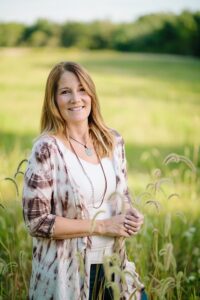Imagine, just for a moment, being a real estate agent in Monterey California, and your client telling you she wants to live in a neighborhood where the “good characters” lived in Big Little Lies and not where the “bad characters lived.” Sigh.
Perhaps nothing did more and less for a beautiful location than the film adaptation of Liane Moriarty’s blockbuster Big Little Lies, a book originally set in a lovely seaside town in Australia, and reimagined on screen on the Monterey Peninsula (sharp viewers will notice Big Sur and Pacific Grove and yes, some southern California beaches) and immediately populated by wife beaters, rapists, serial cheaters, murderers, liars and yes, just for good measure, violent children. Still it’s so pretty! Look at those views! Pre-Covid, tourism sites touted the locations and offered tours, including See Monterey. And road trips were featured on all kinds of travel sections and yes, even on the Travel Channel. Meanwhile, the residents of tiny Big Sur were not exactly amused by the tourist traffic, as reported in the LA Times.
But then, writers taking a beautiful place in the good old USA and turning it upside down and inside out with the tortured secret lives of fictional characters is nothing new. It’s a tradition brought to life in The Great Gatsby, and the mansions of Long Island, and continued annually up and down every coast and everywhere in between. Consider The Secret History by Donna Tartt, which makes the thought of sending your children to a leafy, lofty New England boarding school quite a mixed bag. Murder and Coverup and Lifelong Guilt 101, anyone?
Consider, also, the recent release The Good Neighborhood by Therese Ann Fowler, set in a verdant North Carolina neighborhood. It explores issues of gentrification, renovation, class and racism, all packed into a neighborhood in an excellent school district that everyone wants to live in. The story revolves around new residents and an old tree that encroaches on expansion plans, a teen romance that tests local attitudes about race, and suddenly all hell breaks loose in the neighborhood. Can you imagine living in that state? Well, Fowler actually does live there, and there was a real tree that inspired her and then…well, the rest is fiction. Meanwhile, in a strictly non-fiction sense, North Carolina is enjoying a steady influx of new movers, according to Carolina demography. Even books with, shall we say, naughty characters that feel tantalizingly real, can’t diminish North Carolina’s affordable, beautiful appeal.
Defending Jacob by William Landay, set in the Boston suburb neighborhood of Newton, Massachusetts, performs a similar autopsy on a desired suburb in an excellent school district. Yes, the porches are wide and the kitchens are open concept and the kids can walk to school – but when walking to school involves a tree-lined path where a child is murdered and a body casually tossed away, how does one compare that to high SAT scores?
The recently released The Guest List by Lucy Foley, immediately puts the wedding industry, with its Pinterest boards and planners and influencers back on its heels, with its picture-perfect but truly murderous location on a remote island off the West coast of Ireland—Connemara. It’s a book where every detail of the wedding is beautiful and considered and photo-worthy, yet everyone attending the wedding becomes a windswept suspect when the lights go out. The number of characters to dislike is very, very high, and the behavior of many very, very reprehensible. But oh, the tidepools and the salt-tinged scent and the stars in the night sky! While based on several real islands there—Inisbofin and Inisturk—Foley chose to invent her own island built for her own purposes. The verdict is still out on whether tourists will venture to the islands that inspired her…or dare to book their weddings there.
All authors know that setting can make or break a book. And in many fine novels like those mentioned here, the setting actually becomes a character in the book—evoking all the feelings of warmth and familiarity, or envy and aspiration. Given how much time we’re all spending at home now, can anyone blame a reader for wanting to “live” in the setting of a novel? The only question remains—how bad of a good neighborhood are we willing to live in?
For a few days of good reading or based-on-the-book binge-watching… it would seem we are willing to inhabit some very deliciously bad neighborhoods indeed.
 Kelly Simmons’s sixth novel, NOT MY BOY, is about sisters living next door to one another in a picture-perfect Main Line, Pennsylvania neighborhood that contains a murderer, and turns sister against sister. (Housing values plummet!) Kelly teaches in the Drexel University MFA Program, and is a member of WFWA, The Tall Poppy Writers, and The Liars Club, a non-profit dedicated to helping fledgling writers. Visit her online at kellysimmonsbooks.com.
Kelly Simmons’s sixth novel, NOT MY BOY, is about sisters living next door to one another in a picture-perfect Main Line, Pennsylvania neighborhood that contains a murderer, and turns sister against sister. (Housing values plummet!) Kelly teaches in the Drexel University MFA Program, and is a member of WFWA, The Tall Poppy Writers, and The Liars Club, a non-profit dedicated to helping fledgling writers. Visit her online at kellysimmonsbooks.com.
